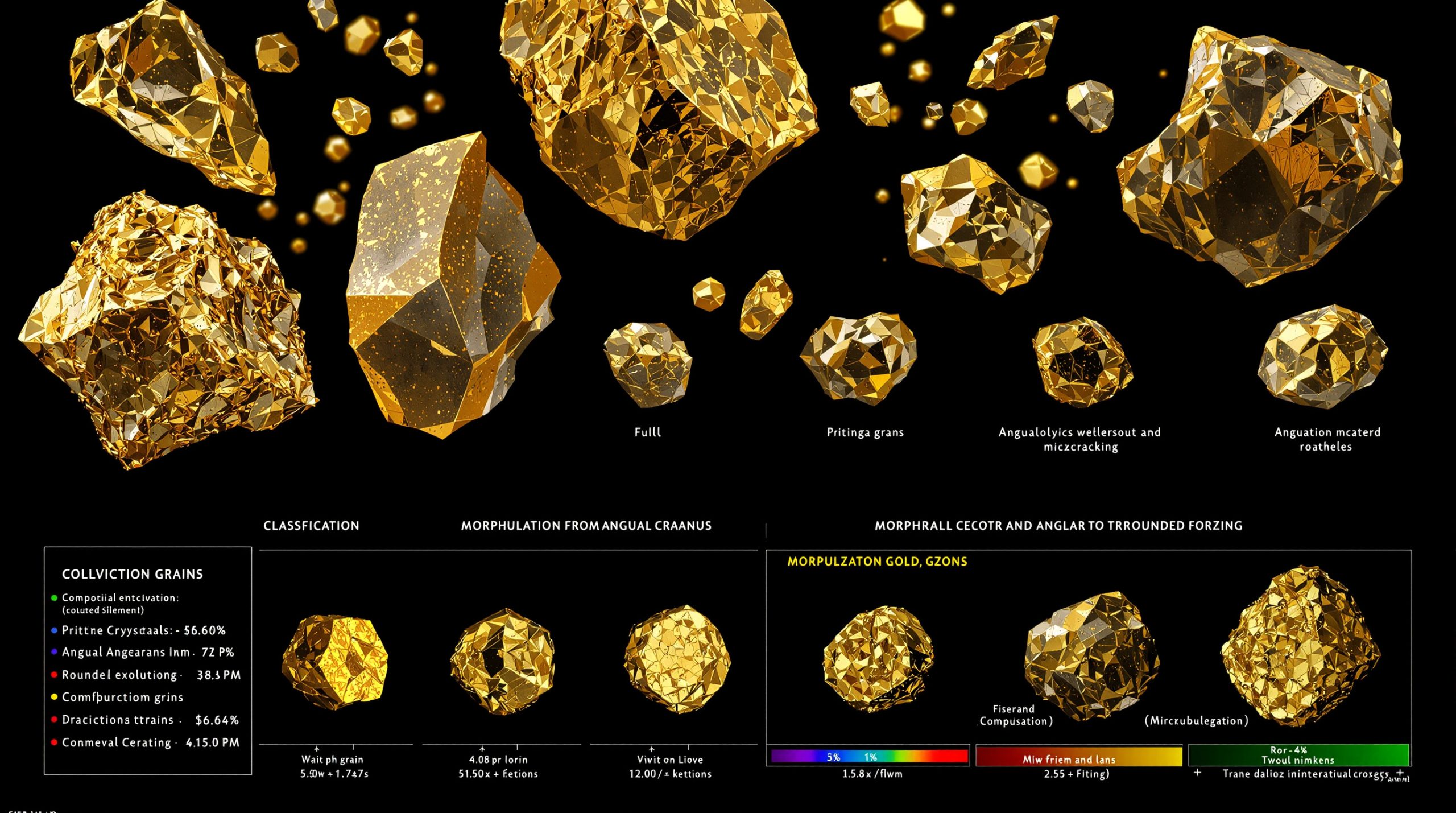What Is Flagship Gold's New Mali Mining Partnership?
Flagship Gold Corp, a New York-based mining company established in June 2024, has signed a landmark partnership agreement with Mali's state-owned mining enterprise to restart production at the historic Morila gold mine. This deal, finalized in October 2025, marks the first American investment under Mali's revised mining code and comes amid surging gold prices exceeding $4,000 per ounce.
The Morila mine, located in the Sikasso region of southern Mali near the city of Sanso, holds estimated reserves of 2.5 million ounces of gold. At current market prices, these reserves represent a potential gross value of approximately $10 billion, making the acquisition strategically significant for both Flagship Gold and Mali's economy.
The Historic Morila Gold Mine Acquisition
The partnership agreement allows Flagship Gold to acquire equity in Morila SA, the entity holding the mine assets. While specific financial terms and equity percentages remain undisclosed, the deal has been characterized as "a win-win partnership" by Mali's Mines Minister Amadou Keita, reflecting the government's optimism about the collaboration.
This acquisition represents a significant opportunity for Flagship Gold, which despite being a relatively new player in the mining sector, has positioned itself to capitalize on the current gold bull market. The company's entrance into Mali comes at a time when record gold price analysis has increased the economic viability of mine rehabilitation projects worldwide.
Flagship Gold's Strategic Entry
Morila's transition to Flagship Gold ownership follows a complex history of operational changes. The Mali government took over once leading Morila gold mine for $1 in June 2025 after Australia's Firefinch Limited abandoned operations in 2022, citing declining output and rising operational costs. Before Firefinch's withdrawal, the mine had established a reputation as a significant producer under the joint operation of mining giants Barrick Gold and AngloGold Ashanti.
For Flagship Gold, the timing of this acquisition aligns perfectly with market conditions that favor mine rehabilitation projects. With gold trading consistently above $4,000 per ounce, deposits previously considered marginal have become economically attractive. This price environment has intensified competition for high-grade deposits globally, with Morila representing one of the more substantial opportunities in West Africa.
When questioned about specific financing arrangements, David Alan Miller of Graubard Miller, legal counsel for Flagship Gold, stated that the company is currently unable to disclose information beyond what is publicly available. This suggests that while the partnership framework has been established, detailed operational and financial planning may still be in development.
How Did Morila Mine's Ownership Change Over Time?
The Morila gold mine has undergone several ownership transitions since its establishment, reflecting the evolving dynamics of Mali's mining sector and the challenges of operating in the region.
The Legacy of Major Mining Companies
Prior to its current status, Morila operated as a joint venture between mining giants Barrick Gold and AngloGold Ashanti. During this period, the mine established itself as one of Mali's premier gold-producing assets, contributing significantly to the country's position among Africa's leading gold producers.
The transition from Barrick and AngloGold Ashanti to Australian company Firefinch Limited represented a shift from operation by major mining houses to a mid-tier producer. Firefinch initially sought to rejuvenate the aging mine but ultimately abandoned operations in 2022 after struggling with a combination of declining gold grades, increasing operational costs, and the complex operating environment in Mali.
The challenges faced by Firefinch highlight the difficulties of maintaining profitable operations as mines mature. As surface deposits are depleted, mining companies must typically transition to more costly underground operations or process lower-grade ore, both of which squeeze profit margins unless gold prices rise sufficiently to offset increased costs.
Mali's State Intervention
Following Firefinch's withdrawal, the mine remained inactive until June 2025, when Mali's government took direct control of the asset. This state intervention reflected both the strategic importance of the mine to Mali's economy and the broader trend of resource nationalism sweeping across West Africa.
The state takeover served as a transitional phase, with the government seeking a suitable partner to restart operations rather than attempting to operate the mine independently. This approach acknowledges the technical expertise and capital requirements necessary for successful mine reclamation evolution.
The October 2025 partnership with Flagship Gold represents the latest chapter in Morila's operational history. The agreement signals Mali's willingness to collaborate with Western investors despite the broader geopolitical shifts in the region, where Russian and Chinese influence has grown considerably in recent years.
Why Is Mali Reshaping Its Mining Sector Regulations?
Mali's mining sector underwent a transformative regulatory change in August 2023 when the government implemented a new mining code that fundamentally altered the relationship between the state and foreign investors. This regulatory shift reflects a broader trend of resource nationalism sweeping across West Africa's mineral-rich nations.
The 2023 Mining Code Transformation
The revised mining code contains several provisions that strengthen state control over natural resources:
- Increased state ownership rights up to 30% in new mining projects
- Elimination of previously established tax exemptions
- Enhanced government oversight of mining operations
- Prioritization of national economic interests
These changes represent a significant departure from previous regulations that offered more favorable terms to foreign investors. The code's implementation has created a more challenging investment environment for traditional Western mining companies, many of which have expressed concerns about reduced profitability and increased political risk.
The Flagship Gold partnership represents the first American investment under this new regulatory framework, potentially signaling that despite the more stringent requirements, international investors still see value in Mali's mineral wealth when market conditions are favorable.
Resource Nationalism Across West Africa
Mali's regulatory changes do not exist in isolation but rather as part of a regional trend. Neighboring countries including Burkina Faso, Niger, and Guinea have all implemented similar measures to tighten governmental control over valuable commodities including gold, uranium, and bauxite.
This wave of resource nationalism has multiple drivers:
- Public perception that foreign companies extract wealth without sufficient local benefit
- Military-led governments seeking popular support through nationalist economic policies
- Desire to increase state revenues from natural resources
- Growing confidence in negotiating with foreign investors from multiple regions
The implementation of these policies has created a complex operating environment across the Sahel region, with many Western companies reducing their exposure while Russian and Chinese firms have expanded their presence through state-backed deals.
Mining industry analysts note that this shift in resource governance reflects both economic pragmatism and changing geopolitical alignments, as countries seek to maximize returns from their mineral endowments while diversifying their international partnerships beyond traditional Western relationships.
How Will This Deal Impact Mali's Gold Production?
The revival of the Morila mine comes at a critical juncture for Mali's gold sector, which has experienced significant production challenges in recent years. Understanding the potential impact requires examining both the current production crisis and the mine's potential contribution to national output.
Current Production Challenges
Mali's gold sector has faced substantial headwinds, with industrial gold output declining by 32% year-on-year to 26.2 metric tonnes by the end of August 2025. This precipitous drop reflects several interrelated challenges:
- Regulatory uncertainty following implementation of the new mining code
- Security concerns affecting operations in certain regions
- Aging deposits at established mines leading to declining grades
- Withdrawal of some international mining companies
- Infrastructure limitations affecting operational efficiency
Despite these challenges, Mali remains one of Africa's top gold producers, though its ranking has slipped due to the production decline. The country's gold mining sector has historically been dominated by a handful of large-scale operations supplemented by artisanal mining activities, with the latter not fully captured in official production statistics.
Projected Recovery Through Morila
The rehabilitation of Morila mine has the potential to meaningfully impact Mali's gold production profile. While specific production targets have not been publicly disclosed, industry experts suggest several key benefits could emerge:
-
Production Increase: Even modest initial production could help reverse the negative trend in national gold output
-
Employment Generation: Reopening the mine will create hundreds of direct jobs and additional indirect employment in the Sikasso region
-
Technology Transfer: Introduction of updated mining methodologies and equipment could improve efficiency and environmental performance
-
Economic Multiplier Effects: Increased economic activity in the mining supply chain and local communities
-
Investment Signal: Successful rehabilitation could encourage other companies to reconsider Mali's investment potential
Economy Minister Alousséni Sanou has expressed that the deal "raises hope" for the country's mining future, suggesting the government views the partnership as potentially catalytic for broader international investment in the sector.
Mining analysts note that while rehabilitating the mine faces technical challenges, the combination of substantial remaining reserves and current gold market surge insights creates favorable economic conditions for a successful restart. The project timeline remains unclear, but similar mine rehabilitations typically require 12-18 months before reaching commercial production levels.
What Financial Considerations Drive The Morila Rehabilitation?
The rehabilitation of Morila presents significant financial challenges and opportunities that will shape the project's development path. While specific details of the financing arrangement remain undisclosed, several key factors will likely influence the project's financial structure and ultimate success.
Investment Requirements and Funding Structure
Restarting a gold mine of Morila's scale requires substantial capital investment across multiple categories:
- Equipment Refurbishment or Replacement: Mining fleet, processing plant, and auxiliary equipment
- Infrastructure Rehabilitation: Roads, power supply, water management systems
- Initial Operating Capital: Covering costs until revenue generation begins
- Environmental Compliance: Upgrades to meet current standards and address legacy issues
- Exploration Budget: Potentially expanding known reserves through targeted drilling
Mining finance experts estimate that similar mine rehabilitation projects typically require $50-100 million in initial capital, though the specific requirements at Morila would depend on the current condition of existing infrastructure and equipment.
The funding structure for such projects typically involves a combination of equity investment, project financing, and potentially streaming or royalty arrangements, particularly in jurisdictions perceived to have elevated political risk. Without disclosure from Flagship Gold, the precise funding mechanism remains speculative.
Economic Viability Factors
Several factors enhance Morila's economic potential under current market conditions:
- Gold Price Environment: With gold trading above $4,000 per ounce, operations that might be marginal at lower prices become highly profitable
- Existing Infrastructure: The presence of established infrastructure reduces capital requirements compared to greenfield development
- Known Geology: Previous operations provide detailed understanding of the deposit, reducing exploration risk
- Potential Tax Incentives: Despite the elimination of some exemptions under the new mining code, restart projects may qualify for specific incentives
Conversely, several challenges could impact financial performance:
- Grade Uncertainty: As mines mature, gold grades often decline, potentially reducing profitability
- Operational Costs: Mali's landlocked position increases logistics costs for fuel, reagents, and equipment
- Security Considerations: Additional expenses for security infrastructure and personnel
- Regulatory Compliance: Adapting to requirements under the new mining code
The project's ultimate financial success will depend on effective management of these factors, particularly controlling operational costs while maximizing gold recovery from available resources.
How Does This Deal Reflect Changing Geopolitical Dynamics?
The partnership between Flagship Gold and Mali's government represents a significant development in the region's evolving geopolitical landscape. This agreement occurs against a backdrop of shifting allegiances and competing international interests in West Africa's resource-rich nations.
Shifting Investment Landscape in Mali
Mali's mining sector has experienced substantial transformation in its international partnerships over recent years:
- Western Retreat: Many traditional Western mining companies have reduced exposure to Mali following political transitions in 2020-2021 and subsequent regulatory changes
- Russian Expansion: Russian firms have secured several mining deals in Mali since 2022, reflecting strengthened diplomatic and security ties
- Chinese Presence: Chinese companies have maintained and expanded investments across Mali's resource sector
- American Re-engagement: Flagship Gold's deal potentially signals renewed U.S. interest in Mali's mineral wealth
This diversification of international partnerships reflects Mali's strategic approach to resource development, seeking to balance relationships with various global powers rather than relying exclusively on traditional Western investors.
Mining industry observers note that Mali's government has adopted an increasingly pragmatic approach to international partnerships, prioritizing investment terms and technical capabilities over geopolitical alignment. This stance allows companies from various regions to compete for access to mineral resources, potentially improving terms for the host country.
Regional Security and Mining Operations
The security environment across the Sahel region has direct implications for mining operations and investment decisions. Mali has experienced security challenges in its northern and central regions, though the Sikasso region where Morila is located has remained relatively stable.
For mining companies considering investment in Mali, security considerations include:
- Personnel Safety: Protocols for protecting expatriate and local staff
- Supply Chain Security: Ensuring reliable transportation of supplies and produced gold
- Infrastructure Protection: Safeguarding mine assets and supporting infrastructure
- Risk Insurance: Obtaining appropriate coverage in a challenging insurance market
Flagship Gold's willingness to invest despite these considerations suggests confidence in the security situation around Morila or implementation of robust security arrangements as part of the partnership agreement.
The regional security dynamic is complex, with various international actors involved in counter-terrorism and stabilization efforts. France has reduced its military presence in recent years, while Russian private military contractors have expanded operations, creating a fluid security environment that mining companies must navigate carefully.
What Environmental and Social Considerations Must Be Addressed?
The rehabilitation of Morila mine presents both environmental challenges and social opportunities that must be carefully managed to ensure sustainable operations and positive community relations.
Sustainable Mining Practices
Restarting operations at a previously developed mine site requires addressing both legacy environmental issues and implementing modern mining sustainability transformation:
- Water Management: Gold mining is water-intensive, requiring careful monitoring of water quality and quantity impacts on local watersheds
- Tailings Management: Proper containment and monitoring of processed mine waste to prevent contamination
- Energy Efficiency: Implementing modern equipment and practices to reduce carbon footprint
- Land Rehabilitation: Progressive reclamation of disturbed areas and comprehensive closure planning
- Biodiversity Conservation: Protecting local ecosystems from operational impacts
Mining industry standards have evolved significantly since Morila's initial development, with greater emphasis on environmental performance and sustainability. The mine restart provides an opportunity to implement these higher standards, potentially improving upon historical practices.
Environmental engineering experts note that rehabilitating existing mine sites often presents lower environmental impact than developing new mines, as much of the initial disturbance has already occurred. However, addressing legacy issues from previous operations can present significant technical challenges.
Community Engagement and Development
The relationship between mining operations and local communities has emerged as a critical factor in project success. Effective community engagement for Morila's revival will likely include:
- Local Employment: Prioritizing hiring from surrounding communities and providing skills development
- Supply Chain Opportunities: Creating procurement pathways for local businesses
- Infrastructure Investment: Contributing to community infrastructure needs in consultation with local authorities
- Transparent Communication: Maintaining open dialogue about operational impacts and benefits
- Cultural Respect: Operating with sensitivity to local customs and traditions
The Sikasso region has a long history of mining activity, with communities familiar with both the benefits and challenges of hosting mining operations. This existing understanding provides a foundation for constructive engagement, though community expectations have likely evolved since Morila's previous operational period.
Mining community development specialists emphasize that successful community relations require consistent engagement rather than one-time initiatives. Companies that establish long-term partnerships with host communities typically experience fewer disruptions and stronger local support, creating value for both the operation and the community.
FAQ: Mali's Gold Mining Sector
How significant is Mali in global gold production?
Mali has consistently ranked among Africa's top five gold producers, though its position has fluctuated with production levels. Before the recent decline, Mali produced approximately 60 tonnes of gold annually, placing it third in Africa behind Ghana and South Africa. While representing less than 2% of global gold production, Mali's output is significant regionally and vitally important to the national economy, accounting for over 70% of export revenues in recent years.
What challenges face foreign investors in Mali's mining sector?
Foreign investors in Mali's mining sector confront several significant challenges:
-
Regulatory Framework: The 2023 mining code increased state participation requirements and eliminated certain tax exemptions, potentially impacting project economics
-
Infrastructure Limitations: Mali's landlocked position and limited transportation infrastructure increase logistics costs and complexity
-
Security Considerations: Regional security concerns require additional investment in security protocols and infrastructure
-
Political Stability: Political transitions in 2020-2021 created uncertainty, though the current government has stabilized and demonstrates commitment to mining sector development
-
Technical Challenges: As surface deposits deplete, mines must transition to underground operations or lower-grade resources, increasing technical complexity
How does the gold price surge affect Mali's mining revival?
The dramatic rise in gold prices beyond $4,000 per ounce has transformed the economic calculation for mining projects in Mali and globally. This price environment creates several opportunities:
-
Increased Operational Margins: Existing mines benefit from substantially higher revenue per ounce produced
-
Rehabilitation Viability: Previously abandoned or suspended operations become economically viable for restart
-
Exploration Incentives: Higher prices justify increased investment in exploration to identify new resources
-
Technology Implementation: Enhanced profitability supports investment in efficiency-improving technologies
-
Buffer Against Costs: Higher gold prices provide cushion against rising operational costs and increased regulatory burdens
Mining economists note that while gold prices have historically been volatile, current geopolitical uncertainties, inflation concerns, and US‑China trade impacts support continued strong pricing, creating a favorable environment for gold mining investment.
What other major gold mines operate in Mali?
Mali hosts several significant gold operations beyond Morila, including:
-
Loulo-Gounkoto Complex: Operated by Barrick Gold in western Mali, this complex ranks among Africa's largest gold mining operations, producing approximately 600,000 ounces annually
-
Syama Mine: Operated by Resolute Mining, this operation in southern Mali features both open-pit and underground mining, producing over 250,000 ounces annually
-
Fekola Mine: Operated by B2Gold in western Mali, this relatively new operation produces approximately 600,000 ounces annually and represents one of the country's most significant mining investments
-
Sadiola Mine: Located in western Mali, this operation has undergone ownership transitions but continues to produce gold
-
Yatela Mine: Near Sadiola, this operation has moved toward closure with limited remaining production
These operations, combined with smaller mines and artisanal production, form the backbone of Mali's gold sector. The distribution of mines across different regions of the country creates a geographically diverse industry, though most large-scale operations are concentrated in the western and southern regions.
Further Exploration:
Readers interested in learning more about West African mining developments can also explore related educational content, such as Mining.com's coverage of regional mining trends and resource nationalism in the Sahel region. For deeper understanding of gold market dynamics affecting project economics, Bloomberg's commodity analysis provides valuable insights into price drivers and market forecasts.
Ready to Catch the Next Major Mineral Discovery?
Stay ahead of the market with Discovery Alert's proprietary Discovery IQ model, which instantly notifies investors of significant ASX mineral discoveries and transforms complex data into actionable insights. Explore why historic discoveries can generate substantial returns by visiting the dedicated discoveries page and begin your 30-day free trial today.




